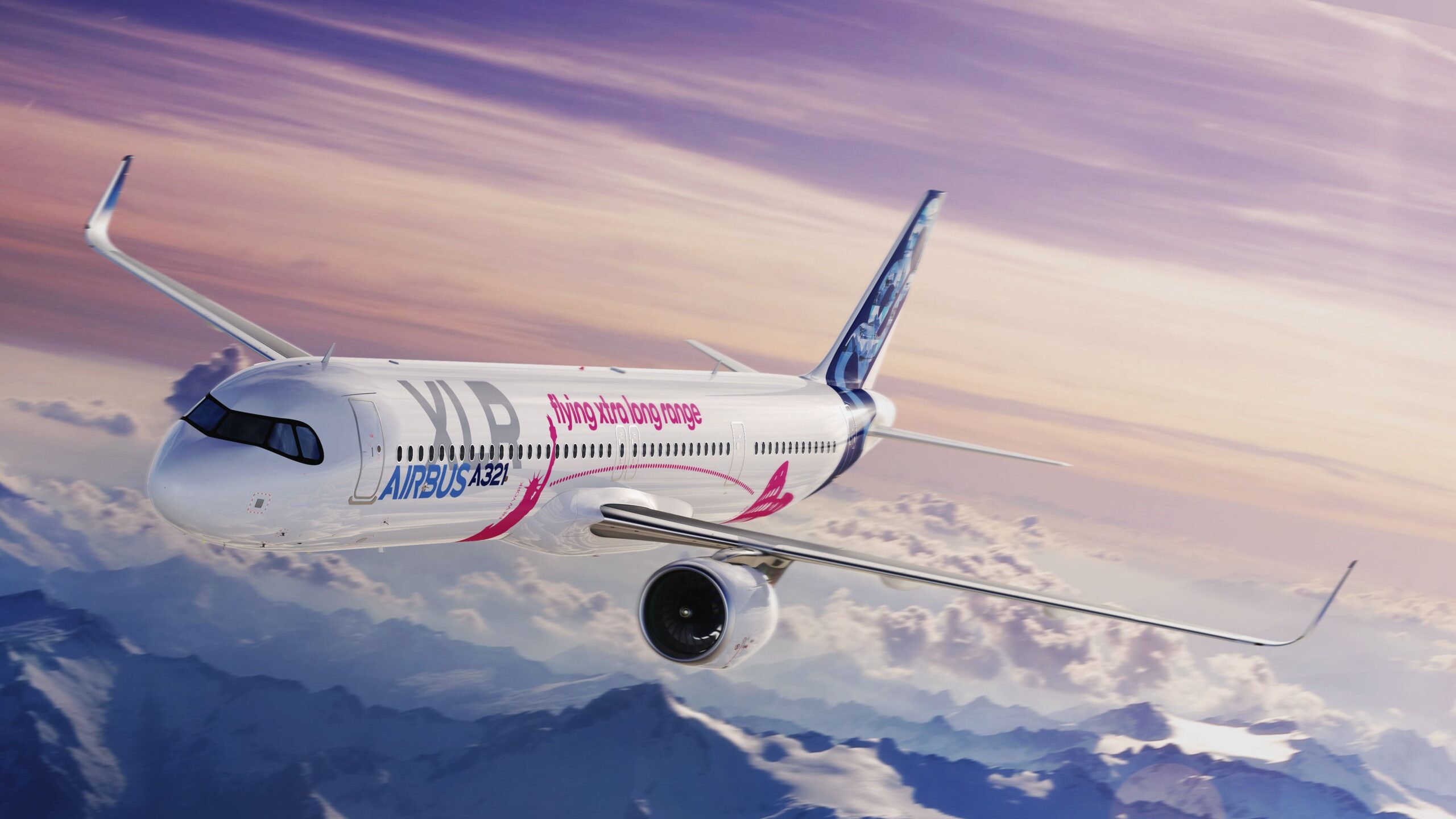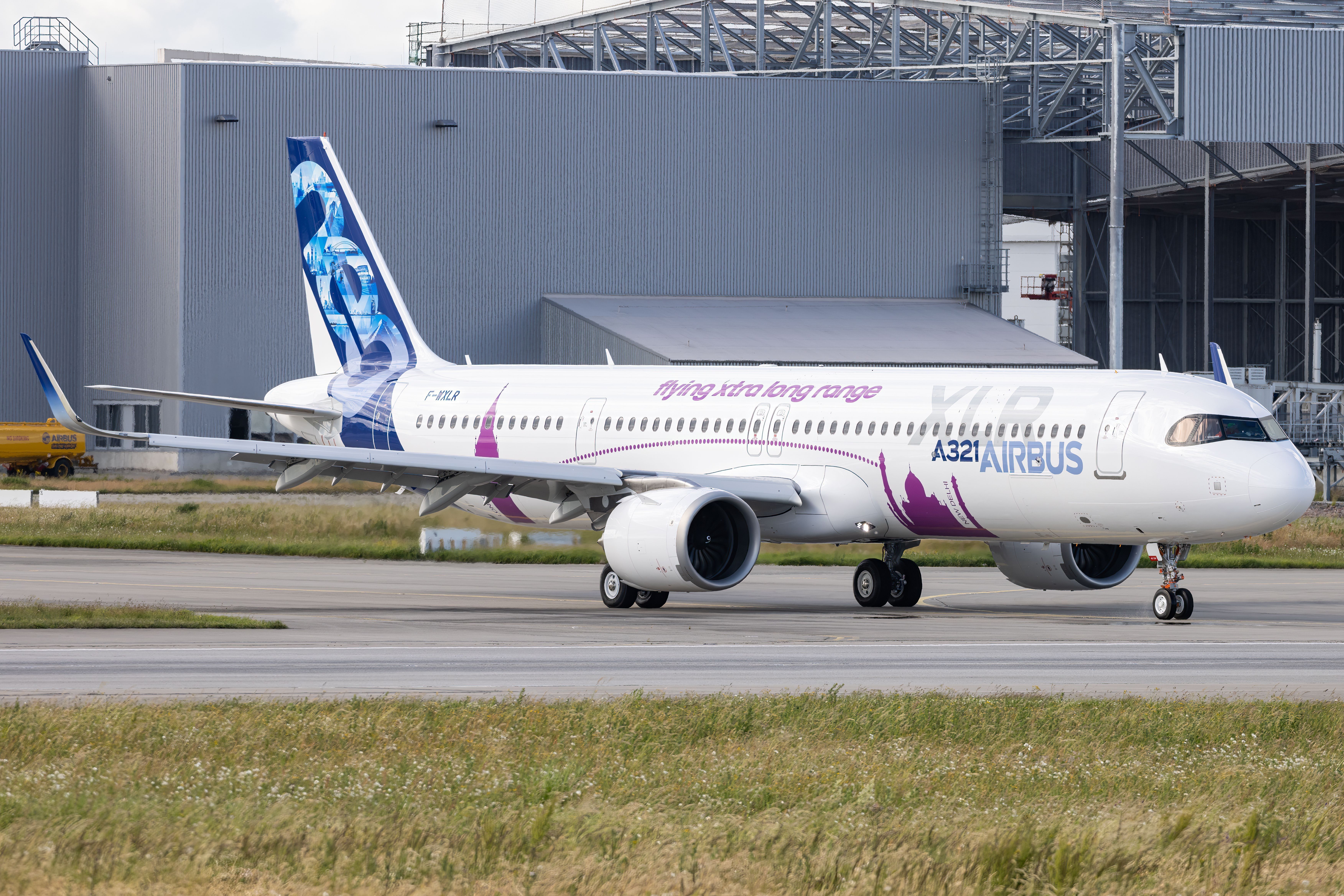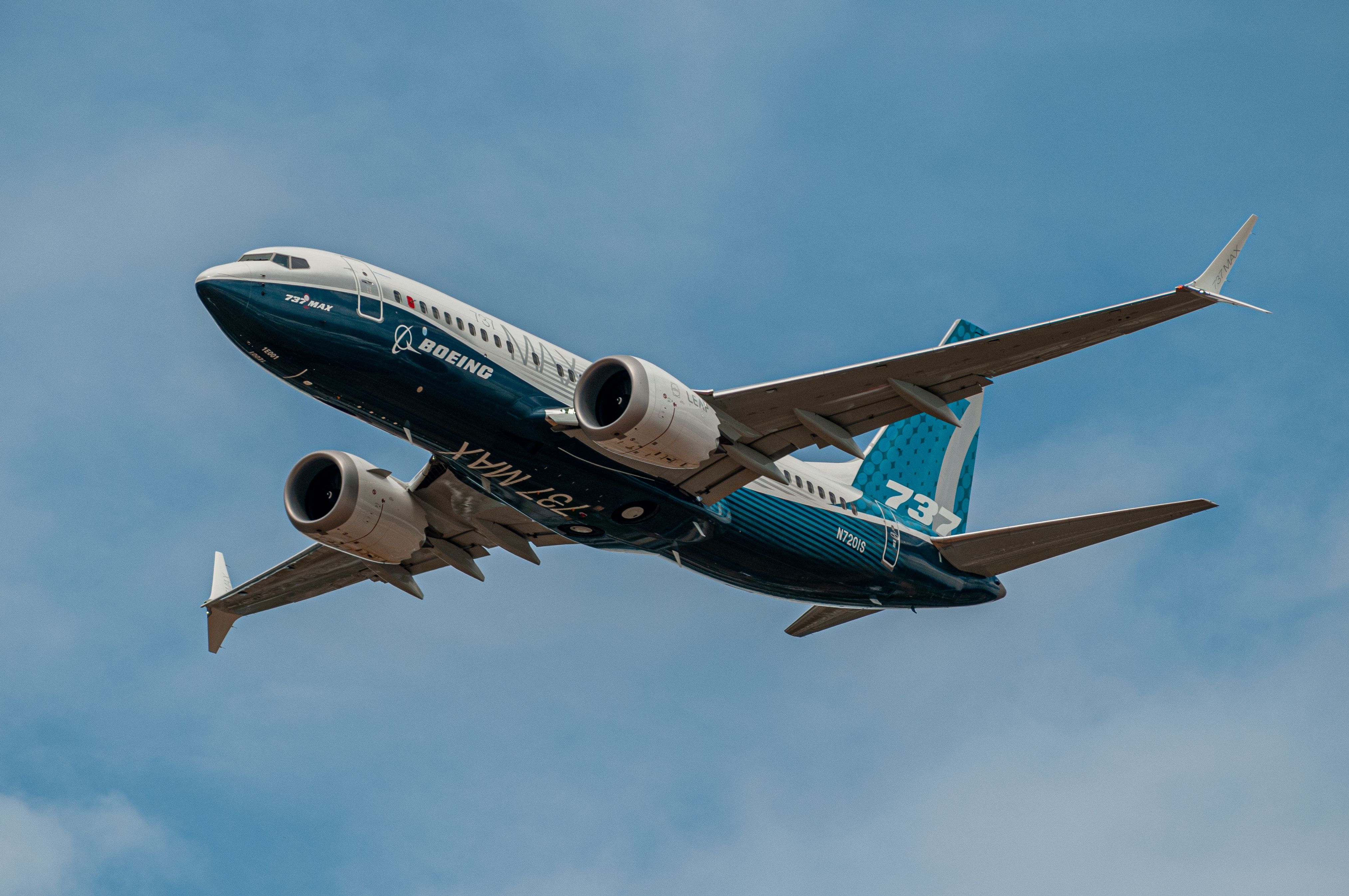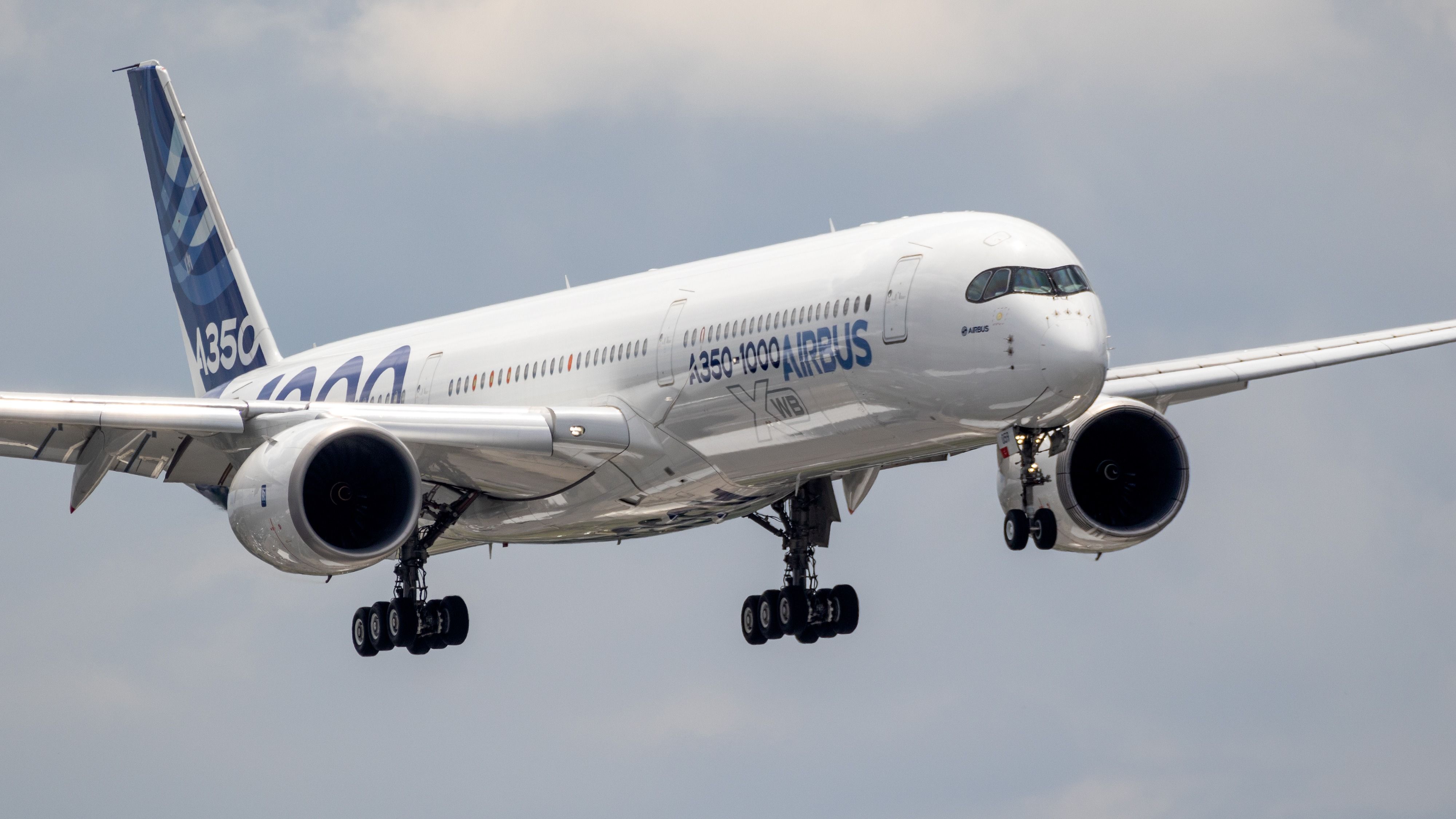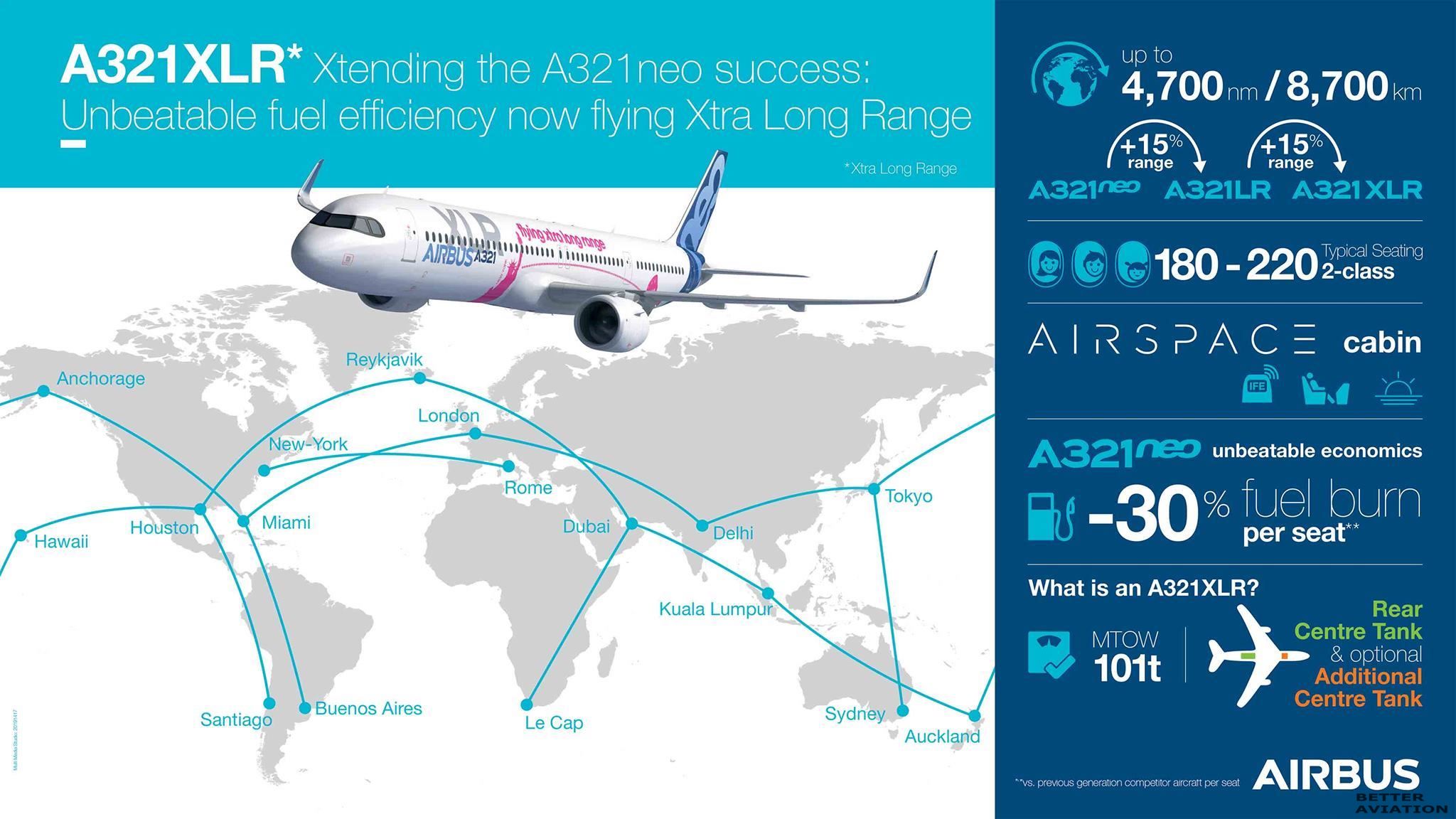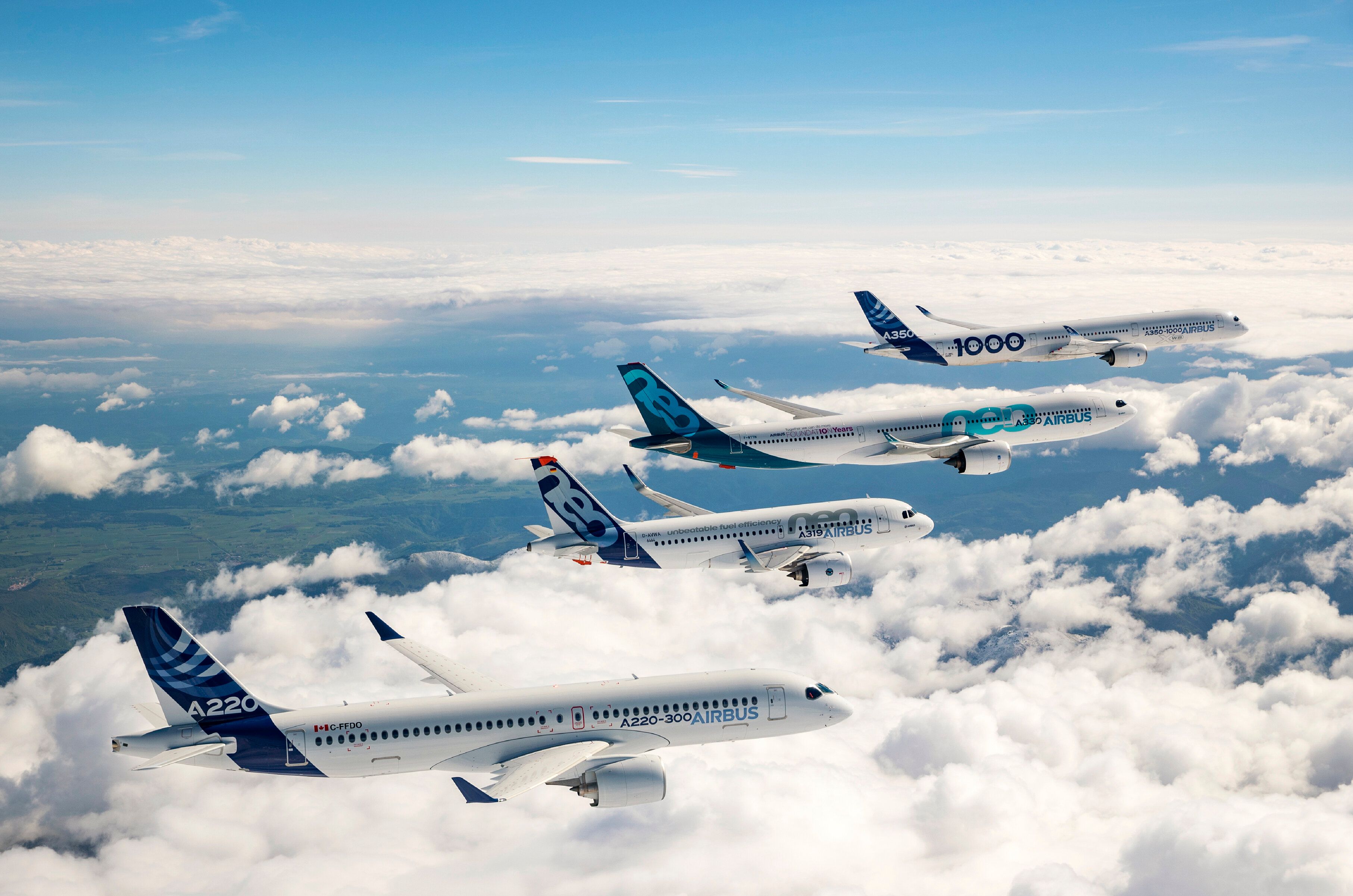Summary
- The Airbus A321XLR is the longest-range single-aisle aircraft, offering a theoretical or brochure range of 4,700 nautical miles.
- Compared to other long-haul twinjets, the A321XLR may appear to fall short in terms of range, given it is a single-aisle aircraft.
- Despite its smaller size, the A321XLR has received significant interest from airlines globally, with over 500 orders already placed.
The Airbus A321XLR is the longest-range single-aisle aircraft in the world. It boasts a range of 4,700 nautical miles (approximately 8,700 kilometers) and is the latest development in the European manufacturer’s A320neo family. ‘Neo’ aircraft, short for ‘new engine option,’ feature significant advantages compared to the original ‘ceo’ (‘current engine option’) variants of the A320 family. While the A321XLR has the most extended range of any single-aisle plane, let’s see how it compares to other long-haul twin jets.
A321XLR
Airbus’ A321XLR has the most extended range compared to any jet in its class. The Airbus A321LR and its successor, the A321XLR (Extra Long Range), showcase significant advancements in the long-range capability of a narrowbody aircraft. The A321LR, introduced in 2015, has a range of up to 4,000 nautical miles and can accommodate anywhere from 160 to 240 passengers, depending on the cabin configuration. Four years later, in 2019, Airbus introduced the A321XLR, taking long-range single-aisle travel to a new potential.
Photo: Wirestock Creators | Shutterstock
The A321XLR is the extended-range variant of the A321neo, which is designed to connect long-haul destinations while having the same benefits as a narrowbody aircraft. The A321XLR has a range of 4,700 nautical miles, allowing airlines to fly thinner long-haul routes that may not have enough demand to use a widebody. It can achieve its extended range through extra fuel tanks at the aircraft’s center and aerodynamic refinements.
However, this maximum range of 4,700 nautical miles can only be attained if the aircraft is configured in a two or three-cabin layout to accommodate between 175 and 200 passengers. If the aircraft is configured in a one-cabin configuration, it can accommodate 244 passengers, but the maximum range drops to 4,000 nautical miles.
No other single-aisle aircraft has a comparison range to the A321XLR. Boeing’s response to the Airbus A321neo was the Boeing 737 MAX family. The Boeing 737 MAX -8 and -9 variants have also been modified to enable extended-range flights. The MAX -8 has a range of 3,500 nautical miles, while the MAX -9 has a range of 3,300 nautical miles. Boeing also has smaller and larger variants, including the MAX 7 and MAX 10. However, the MAX 7 and 10 have yet to enter service, though the MAX 10 is expected to enter service soon, with the first delivery slated for 2024. On the other hand, the MAX 7 has not been certified by the Federal Aviation Administration, but it hopes to be approved by April 2024.
Photo: Wirestock Creators | Shutterstock
Nevertheless, the MAX 7 boasts the best range out of any MAX family jet, with a range of 3,800 nautical miles, while the MAX 10 has the shortest range, with 3,100 nautical miles. While the Boeing 737 MAX jets do not match the range of the A321LR or A321XLR, they still significantly improve over their previous variants. Now that it has been established that the A321XLR has the most extended range of any single-aisle aircraft, let’s see how it stacks up against other long-haul twinjets.
Squarely in between narrowbody and widebody aircraft
One of the ways by which airplanes can be classified is by the number of engines that they sport. For instance, a quadjet refers to an aircraft with four engines, such as the Boeing 747 or Airbus A380. On the other hand, a twinjet refers to any aircraft with two engines, from the Boeing 777 to the Airbus A350 to the Boeing 737. All of these planes, including the A321XLR, are classified as a twinjet.
Today, the Airbus A350-900ULR (ultra-long-range) and the Boeing 777-200LR (long-range) have the most extended range among twin jets. The longest scheduled passenger flight, Singapore Airlines Flight 23 between New York-JFK and Singapore Changi, is operated by the A350-900ULR. The flight covers a staggering 9,537 miles and takes almost 19 hours. Previously, the 777-200LR served the longest flight before it was overtaken in 2020 by Singapore Airlines. Qatar Airways used to operate a 777-200LR on Qatar Airways flight 921 between Doha and Auckland, New Zealand. The flight covered 9,032 miles and took just over 17 hours. An Airbus A350-1000 now operates this flight.
Photo: VanderWolf Images | Shutterstock
Once the A321XLR enters service, it can operate flights generally operated by a widebody aircraft. For instance, the aircraft can fly nonstop between London and Vancouver, Miami and Buenos Aires, or Tokyo and Sydney.
But regarding long-haul travel, the A321XLR’s range does not stack up against widebody competitors. The Airbus A350, which has three variants, has a different range from 8,100 nautical miles (A350-900) to 8,700 nautical miles (A350-1000) to 9,700 nautical miles (A350-900ULR).
Photo: Airbus
Boeing’s long-haul twin jets boast similar ranges, with the Boeing 777-200LR variant having a range of 8,555 nautical miles while the Boeing 777-300ER variant has a range of 7,370 nautical miles. The Boeing 787 Dreamliner also has various ranges depending on the variant. The 787-9 has the most extended range with 7,565 nautical miles, with the 787-8 coming in second with a 7,305 nautical mile range, and the 787-10 comes in last with just a 6,330 nautical mile range.
Suffice it to say that most, if not all, of these long-haul twin jets double the range of the A321XLR. This is because these long-haul twin jets are absolutely massive, allowing for more fuel capacity, while the A321XLR is way smaller, as it’s a single-aisle aircraft.
Bottom line
The Airbus A321XLR seems to be a success for Airbus, although it has not yet launched. The program is enticing for many airlines wishing to fly long-haul routes that do not have sufficient demand for a widebody aircraft. Currently, there are over 500 orders from 20 different airlines across the globe for the A321XLR. Icelandair became the latest airline to order the aircraft type when it announced in early July that it would order 13 XLRs.
The fuel-efficient engine that was first launched at the June 2019 Paris Air Show is a game changer for the commercial aviation industry.
How do you think the A321XLR range stacks up against other long-haul twinjets? Let us know in the comments below.
